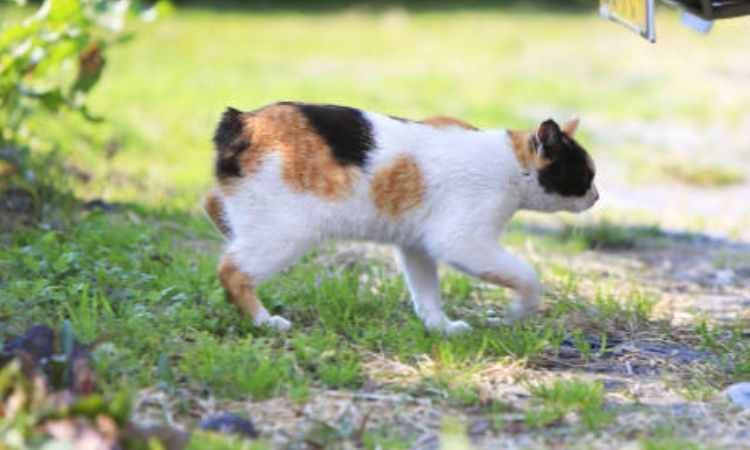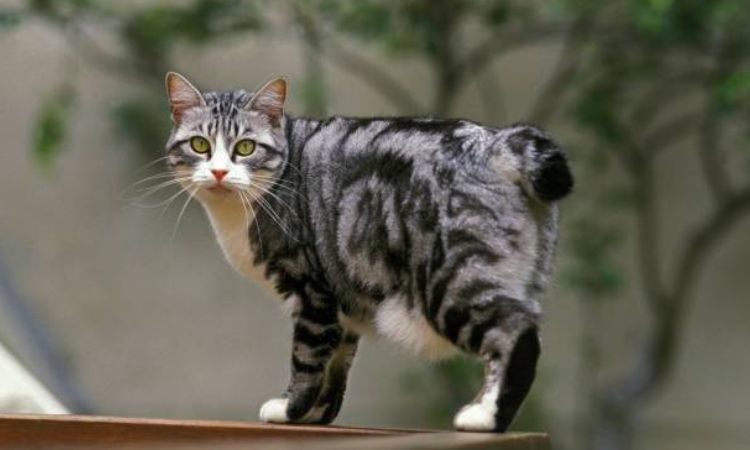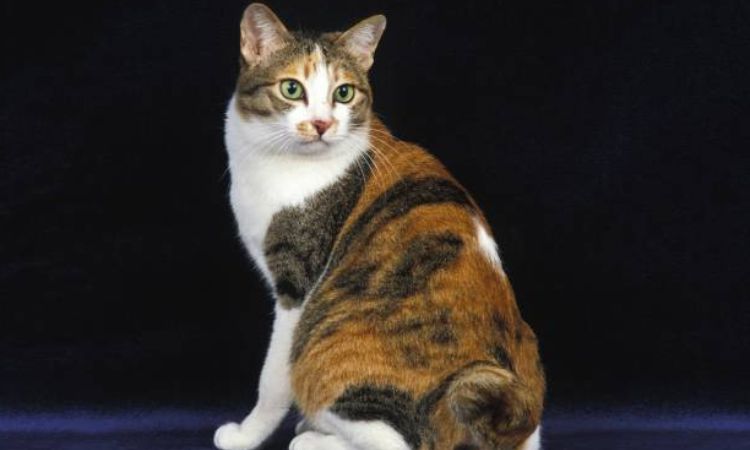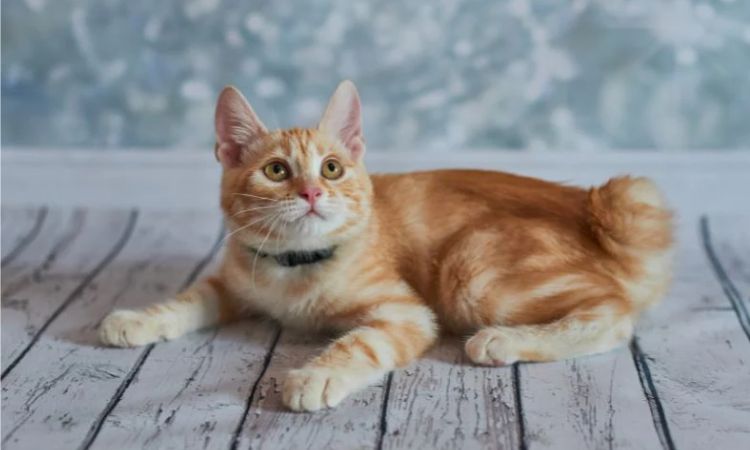The Japanese Bobtail is a breed full of personality, charm, and playful energy. Known for its distinctive “pom-pom” tail and expressive eyes, this cat has been captivating people for centuries. Curious, intelligent, and affectionate, Japanese Bobtails make lively companions in any home. Before bringing one into your life, it’s helpful to understand their unique characteristics, typical size, and lifespan.
Breed Characteristics

Appearance
- Distinctive “Bobbed” Tail: The Japanese Bobtail is instantly recognizable by its short, naturally bobbed tail, often referred to as a “pom.” Each tail is unique—curled, kinked, or straight—and expressive, acting almost like a fingerprint for the cat.
- Coat Colors and Patterns: Japanese Bobtails can have either short or long hair, both silky and easy to maintain. Their colors and patterns are diverse, including:
- Tri-color (mi-ke), bicolor, and solid colors
- Tabby, smoke, and pointed colors
- Shades of white, black, red, chocolate, lilac, and blue, or combinations thereof
- Body Shape and Structure: These cats have a slender, muscular frame with long legs, oval paws, and a medium-length torso. Their triangular heads, large expressive eyes, and tall upright ears give them an alert, graceful appearance. They are elegant yet agile, with powerful back legs built for jumping.
Personality and Temperament
- Affectionate and Social: Japanese Bobtails are friendly, loving, and highly interactive, forming strong bonds with their humans. They are well-suited to singles, families, children, and households with other pets.
- Intelligent and Playful: These cats are curious, smart, and agile problem-solvers. They enjoy interactive play, such as fetch, agility courses, and puzzle toys, and thrive when mentally stimulated.
- Interaction with Families and Other Pets: Japanese Bobtails are adaptable and generally get along with other cats and dogs when properly introduced. They enjoy spending time with their family but are independent enough to play alone without stress.
Common Behaviors
- Vocalization Habits: Known for being soft-spoken yet communicative, they use chirps, trills, and gentle meows to “talk” with their humans. They are expressive without being overly noisy.
- Activity Level: These cats are energetic and playful, requiring regular mental and physical stimulation. They love climbing, jumping, and exploring high places, making cat towers and interactive toys essential.
- Curiosity and Play: Their inquisitive nature ensures they are always engaged in their surroundings. They enjoy exploring, playing with toys, and interacting with people, making them entertaining and endearing companions.
Size and Physical Details

Average Size (Weight and Height)
Japanese Bobtails are small to medium-sized cats with a lean, muscular build. They are notably active and agile, thanks to their long, powerful hind legs and lightweight frame. On average:
- Females: Weigh between 5 and 7 pounds (approximately 2.3–3.2 kg)
- Males: Weigh between 8 and 10 pounds (approximately 3.6–4.5 kg), though some individuals may reach up to 12 pounds (5.4 kg)
- Height: Typically, Japanese Bobtails stand around 10–14 inches (25–35 cm) tall at the shoulder, with variations depending on the individual and whether they are shorthair or longhair
Despite their smaller stature, these cats are strong and athletic, capable of high jumps and quick, graceful movements due to their muscular hindquarters.
Growth Rate and Development Stages
Japanese Bobtails follow a typical feline growth trajectory, but their smaller size makes them seem more agile and sprightly even as kittens:
- Kitten Stage (0–6 months):
- Rapid growth and high energy levels
- Playful and curious, learning social behaviors and environmental awareness
- Weight gain is steady but modest due to their lean build
- Juvenile Stage (6–12 months):
- Body begins to fill out while retaining muscularity
- Coordination and jumping abilities improve significantly
- Personality traits such as affection, playfulness, and vocalization become more pronounced
- Adult Stage (1–3 years):
- Full growth is typically reached by 12–18 months, though some cats may continue maturing up to 2 years
- Males generally continue gaining a bit more weight and muscle compared to females
- Adult coat and tail development are finalized, including the distinctive bobbed tail and any tri-color or patterned markings
- Senior Stage (10+ years):
- Activity levels may gradually decrease
- Muscular tone may soften, but most Japanese Bobtails remain agile and playful into old age
- Lifespan averages 15–18 years, with many living longer under good care
Differences Between Males and Females
While male and female Japanese Bobtails share the same general build and traits, there are a few subtle distinctions:
- Males:
- Typically larger and heavier, with more pronounced musculature in the hind legs
- May have slightly broader heads and more robust body frames
- Can weigh up to 12 pounds, though most stay around 8–10 pounds
- Females:
- More compact and petite, with a lighter frame and slightly smaller head
- Tend to reach adult size sooner than males
- Weight usually ranges from 5–7 pounds
Despite these differences, both genders are equally agile, playful, and intelligent, and their personalities are more influenced by individual temperament than by sex.
Lifespan and Health

Lifespan
Japanese Bobtails are a long-lived and hardy breed, with proper care. On average, they can live 15 to 18 years, and in some cases, even up to 20 years. Their longevity is supported by a generally healthy constitution, an active lifestyle, and a well-balanced diet.
- Factors affecting lifespan:
- Genetics and breeding quality
- Nutrition and portion control
- Level of physical activity and mental stimulation
- Preventive healthcare and veterinary checkups
- Living environment (indoor cats often live longer than outdoor cats)
Common Health Traits
Japanese Bobtails are considered a healthy breed with no known hereditary disorders linked to their distinctive short tails. Unlike some other bobtail breeds, such as Manx cats, their tail gene does not cause spinal or neurological problems.
- General health notes:
- They are naturally sturdy and muscular, which contributes to their athleticism and agility
- Low-maintenance coat reduces risk of skin problems
- Active nature supports cardiovascular and joint health
Potential Health Issues
While generally healthy, Japanese Bobtails can still experience health concerns common to all domestic cats:
- Dental disease
- Gingivitis and periodontitis are common if oral hygiene is neglected
- Preventable with regular brushing, dental treats, or professional cleanings
- Obesity
- Can result from overfeeding or insufficient exercise
- Managed with balanced diet and daily activity
- Urinary tract issues
- Keep cats hydrated with access to fresh water
- Monitor litter box habits for early detection
- Minor skeletal or back concerns
- Unlike Manx cats, Japanese Bobtails are not prone to spinal malformations
- Regular exercise supports healthy bones and joints
- Other possible concerns
- Constipation, heart disease (such as hypertrophic cardiomyopathy, though rare), or behavioral stress issues

Preventive Care Recommendations
To support a long and healthy life, Japanese Bobtails require:
- Veterinary checkups:
- Kittens: multiple early visits for vaccinations and spay/neuter
- Adults: annual exams, weight checks, and vaccines
- Seniors: biannual exams for age-related health monitoring
- Parasite prevention:
- Fleas, ticks, and heartworm protection year-round
- Indoor cats still require protection due to exposure through humans or other pets
- Nutrition and diet:
- Age-appropriate, high-quality cat food
- Adjust portions based on activity level
- Provide fresh water at all times
- Exercise and mental stimulation:
- Daily play with toys, climbing structures, and puzzles
- Encourage hunting games or interactive activities
The Japanese Bobtail is truly an unforgettable feline. They are an active, intelligent, and highly social breed that thrives on human interaction, turning everyday life into an ongoing conversation with their soft, melodious chirps. If you’re looking for a devoted companion that will greet you at the door and play a tireless game of fetch, this lively cat—with its unique, lucky pom-pom tail—might just be the perfect addition to your home.






